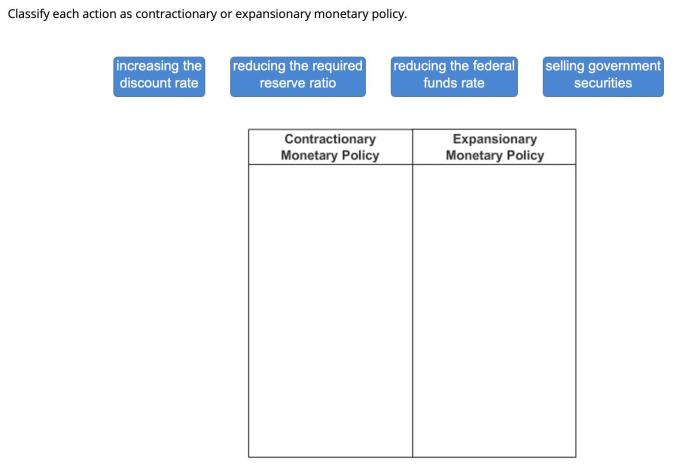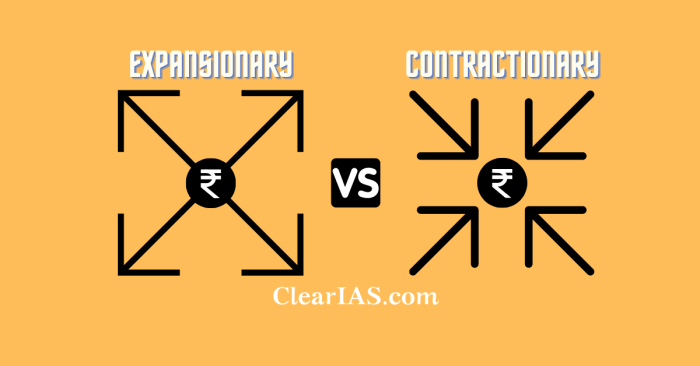Classify each action as expansionary or contractionary monetary policy – Monetary policy actions, whether expansionary or contractionary, play a pivotal role in shaping economic outcomes. This comprehensive guide delves into the intricacies of monetary policy, exploring its concepts, effects, and the critical role of central banks in implementing these measures.
As we navigate the complexities of monetary policy, we will delve into the mechanisms employed to influence economic activity, examining the distinct characteristics and impacts of expansionary and contractionary policies.
Monetary Policy Expansionary Actions

Expansionary monetary policy refers to actions taken by a central bank to increase the money supply in an economy. It is typically used to stimulate economic growth and combat deflation.
Effects of expansionary monetary policy include:
- Increased money supply
- Lower interest rates
- Increased investment and spending
- Higher inflation
Examples of expansionary monetary policy actions include:
- Open market operations (buying government bonds)
- Lowering the reserve requirement
- Quantitative easing
Monetary Policy Contractionary Actions: Classify Each Action As Expansionary Or Contractionary Monetary Policy
Contractionary monetary policy refers to actions taken by a central bank to decrease the money supply in an economy. It is typically used to combat inflation and slow economic growth.
Effects of contractionary monetary policy include:
- Decreased money supply
- Higher interest rates
- Decreased investment and spending
- Lower inflation
Examples of contractionary monetary policy actions include:
- Open market operations (selling government bonds)
- Raising the reserve requirement
- Quantitative tightening
Comparison of Expansionary and Contractionary Monetary Policy

Expansionary and contractionary monetary policies have different effects on the economy.
| Expansionary Monetary Policy | Contractionary Monetary Policy | |
|---|---|---|
| Money Supply | Increases | Decreases |
| Interest Rates | Lowers | Raises |
| Investment and Spending | Increases | Decreases |
| Inflation | Increases | Decreases |
The following visual representation shows the effects of expansionary and contractionary monetary policy on the economy:
[Visual representation]
Implementation of Monetary Policy

Monetary policy is implemented by central banks. The most common tools used by central banks to implement monetary policy are open market operations, the reserve requirement, and quantitative easing/tightening.
Challenges and limitations of implementing monetary policy include:
- Time lags
- Uncertainty about the effects of monetary policy
- International spillovers
Questions and Answers
What is the primary objective of expansionary monetary policy?
Expansionary monetary policy aims to stimulate economic growth by increasing the money supply and lowering interest rates.
How does contractionary monetary policy combat inflation?
Contractionary monetary policy reduces the money supply and raises interest rates, curbing inflation by slowing down economic activity.